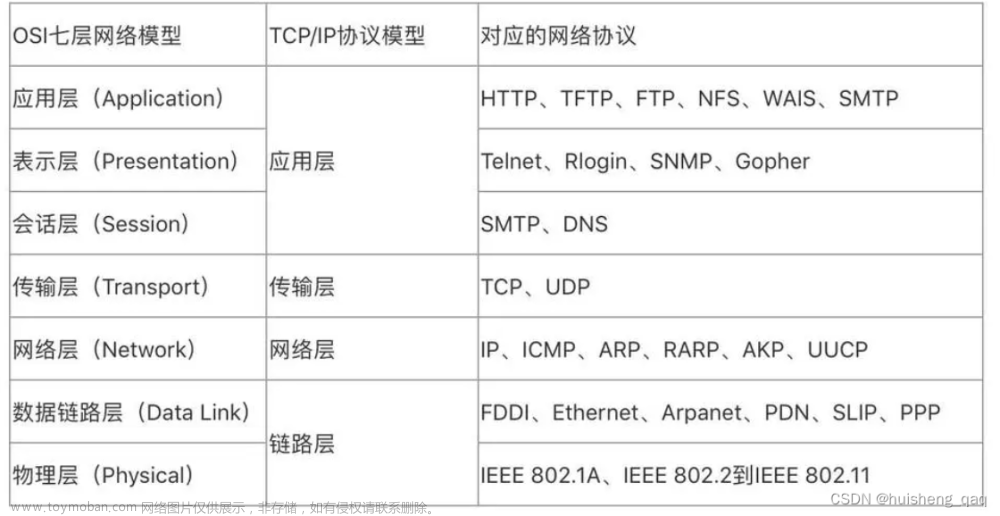一、Netty基本介绍
Netty是由JBOSS提供的一个java开源框架。Netty提供异步的、事件驱动的网络应用程序框架和工具,用以快速开发高性能、高可靠性的网络服务器和客户端程序。Netty 在保证易于开发的同时还保证了其应用的性能,稳定性和伸缩性。
Netty 是一个基于NIO的客户、服务器端的编程框架,使用Netty 可以确保你快速和简单的开发出一个网络应用,例如实现了某种协议的客户、服务端应用。Netty相当于简化和流线化了网络应用的编程开发过程,例如:基于TCP和UDP的socket服务开发。
本文主要介绍Netty中的核心类之一的:NioEventLoop类。
二、NioEventLoop继承体系

三、EventLoop相关接口
我们先看右边的接口, 部分接口我们在上一篇以及介绍过了,可以看Netty中NioEventLoopGroup介绍,我们从OrderedEventExecutor开始往下看。
一、OrderedEventExecutor
public interface OrderedEventExecutor extends EventExecutor {
}OrderedEventExecutor继承了EventExecutor,即拥有线程相关的操作声明。
二、EventLoop
public interface EventLoop extends OrderedEventExecutor, EventLoopGroup {
EventLoopGroup parent();
}EventLoop继承了OrderedEventExecutor和EventLoopGroup接口,即拥有线程相关操作即事件循环组的相关行为声明。但并未声明新的接口。
四、EventLoop相关实现
在介绍EventLoop的实现之前,我们需要了解一些内容:
- EventLoop 定义了Netty的核心抽象,用来处理连接的生命周期中所发生的事件,在内部,将会为每个Channel分配一个EventLoop。
- EventLoopGroup 是一个 EventLoop 池,包含很多的 EventLoop。
- Netty 为每个 Channel 分配了一个 EventLoop,用于处理用户连接请求、对用户请求的处理等所有事件。EventLoop 本身只是一个线程驱动,在其生命周期内只会绑定一个线程,让该线程处理一个 Channel 的所有 IO 事件。
- 一个 Channel 一旦与一个 EventLoop 相绑定,那么在 Channel 的整个生命周期内是不能改变的。一个 EventLoop 可以与多个 Channel 绑定。即 Channel 与 EventLoop 的关系是 n:1,而 EventLoop 与线程的关系是 1:1。
上一篇EventLoopGroup的介绍里写到了MultithreadEventExecutorGroup的初始化和创建EventExecutor
protected MultithreadEventExecutorGroup(int nThreads, Executor executor,
EventExecutorChooserFactory chooserFactory, Object... args) {
if (nThreads <= 0) {
throw new IllegalArgumentException(String.format("nThreads: %d (expected: > 0)", nThreads));
}
if (executor == null) {
executor = new ThreadPerTaskExecutor(newDefaultThreadFactory());
}
// 初始化线程组
children = new EventExecutor[nThreads];
for (int i = 0; i < nThreads; i ++) {
boolean success = false;
try {
// 将线程和传入的executor做一个绑定
// 注意:这里线程组每个元素都绑定了同一个executor
// newChild是一个抽象方法,依赖子类实现
children[i] = newChild(executor, args);
success = true;
} catch (Exception e) {
// TODO: Think about if this is a good exception type
throw new IllegalStateException("failed to create a child event loop", e);
} finally {
// 失败执行策略
if (!success) {
for (int j = 0; j < i; j ++) {
children[j].shutdownGracefully();
}
for (int j = 0; j < i; j ++) {
EventExecutor e = children[j];
try {
while (!e.isTerminated()) {
e.awaitTermination(Integer.MAX_VALUE, TimeUnit.SECONDS);
}
} catch (InterruptedException interrupted) {
// Let the caller handle the interruption.
Thread.currentThread().interrupt();
break;
}
}
}
}
}
// 初始化一个EventExecutor选择工厂,轮询获取EventExecutor,chooserFactory的默认实现是DefaultEventExecutorChooserFactory
// next()方法依赖chooser实现
chooser = chooserFactory.newChooser(children);
// 声明线程终止的监听器
final FutureListener<Object> terminationListener = new FutureListener<Object>() {
@Override
public void operationComplete(Future<Object> future) throws Exception {
if (terminatedChildren.incrementAndGet() == children.length) {
terminationFuture.setSuccess(null);
}
}
};
// 将监听器绑定到线程组的每个线程中
for (EventExecutor e: children) {
e.terminationFuture().addListener(terminationListener);
}
// 初始化线程集合(只读)
Set<EventExecutor> childrenSet = new LinkedHashSet<EventExecutor>(children.length);
Collections.addAll(childrenSet, children);
readonlyChildren = Collections.unmodifiableSet(childrenSet);
}创建EventExecutor
// 创建EventLoop对象,并绑定executor
@Override
protected EventLoop newChild(Executor executor, Object... args) throws Exception {
return new NioEventLoop(this, executor, (SelectorProvider) args[0],
((SelectStrategyFactory) args[1]).newSelectStrategy(), (RejectedExecutionHandler) args[2]);
}我们在这里接着往下跟NioEventLoop
NioEventLoop(NioEventLoopGroup parent, Executor executor, SelectorProvider selectorProvider,
SelectStrategy strategy, RejectedExecutionHandler rejectedExecutionHandler) {
// 初始化
super(parent, executor, false, DEFAULT_MAX_PENDING_TASKS, rejectedExecutionHandler);
if (selectorProvider == null) {
throw new NullPointerException("selectorProvider");
}
if (strategy == null) {
throw new NullPointerException("selectStrategy");
}
provider = selectorProvider;
// 创建一个selector的二元组
final SelectorTuple selectorTuple = openSelector();
selector = selectorTuple.selector;
unwrappedSelector = selectorTuple.unwrappedSelector;
selectStrategy = strategy;
}进入super方法
protected SingleThreadEventLoop(EventLoopGroup parent, Executor executor,
boolean addTaskWakesUp, int maxPendingTasks,
RejectedExecutionHandler rejectedExecutionHandler) {
super(parent, executor, addTaskWakesUp, maxPendingTasks, rejectedExecutionHandler);
// 创建收尾队列
tailTasks = newTaskQueue(maxPendingTasks);
}接着进入super
protected SingleThreadEventExecutor(EventExecutorGroup parent, Executor executor,
boolean addTaskWakesUp, int maxPendingTasks,
RejectedExecutionHandler rejectedHandler) {
super(parent);
this.addTaskWakesUp = addTaskWakesUp;
this.maxPendingTasks = Math.max(16, maxPendingTasks);
// 初始化子线程
this.executor = ThreadExecutorMap.apply(executor, this);
taskQueue = newTaskQueue(this.maxPendingTasks);
rejectedExecutionHandler = ObjectUtil.checkNotNull(rejectedHandler, "rejectedHandler");
}进入ThreadExecutorMap.apply方法
public static Executor apply(final Executor executor, final EventExecutor eventExecutor) {
ObjectUtil.checkNotNull(executor, "executor");
ObjectUtil.checkNotNull(eventExecutor, "eventExecutor");
return new Executor() {
@Override
public void execute(final Runnable command) {
// 这里调用了NioEventLoopGroup所包含的executor的execute()
executor.execute(apply(command, eventExecutor));
}
};
}这里我们关注apply()方法及executor.execute()方法,先跟进去apply()方法:
public static Runnable apply(final Runnable command, final EventExecutor eventExecutor) {
ObjectUtil.checkNotNull(command, "command");
ObjectUtil.checkNotNull(eventExecutor, "eventExecutor");
// 这里包装了一个runnable,记录当前执行线程,并在执行完成后删除
return new Runnable() {
@Override
public void run() {
// 做了线程隔离
setCurrentEventExecutor(eventExecutor);
try {
command.run();
} finally {
setCurrentEventExecutor(null);
}
}
};
}我们再进去executor.execute(apply(command, eventExecutor))的execute方法,这里的实现是ThreadPerTaskExecutor类,跟进去:
@Override
public void execute(Runnable command) {
// 创建并启动一个线程
threadFactory.newThread(command).start();
}这里就完成了线程的创建
我们再回去看看NioEventLoop的openSelector()方法,我们先了解下SelectorTuple类
private static final class SelectorTuple {
final Selector unwrappedSelector;
final Selector selector;
SelectorTuple(Selector unwrappedSelector) {
this.unwrappedSelector = unwrappedSelector;
this.selector = unwrappedSelector;
}
SelectorTuple(Selector unwrappedSelector, Selector selector) {
this.unwrappedSelector = unwrappedSelector;
this.selector = selector;
}
}SelectorTuple 只是一个包含两个 Selector 的内部类,用于封装优化前后的 Selector。而 openSelector() 方法就是为了返回 Selector 并且根据配置判断是否需要优化当前 Selector 。下面看具体代码:
private SelectorTuple openSelector() {
final Selector unwrappedSelector;
try {
// 根据provider创建出个NIo的原生selector
unwrappedSelector = provider.openSelector();
} catch (IOException e) {
throw new ChannelException("failed to open a new selector", e);
}
// 若禁用了keyset优化功能,则直接返回NIo原生的selector,优化就是将selector中的三个set集合变为三个数组
// 因为数组是顺序存放的,要比随机存放的集合执行效率高
if (DISABLE_KEY_SET_OPTIMIZATION) {
return new SelectorTuple(unwrappedSelector);
}
// 此处优化逻辑省略...
}NioEventLoop的父类是一个Executor,所以我们在看看execute()方法:
@Override
public void execute(Runnable task) {
if (task == null) {
throw new NullPointerException("task");
}
// 判断当前线程是不是EventLoop中成员变量的executor线程
boolean inEventLoop = inEventLoop();
// 将任务添加到队列
addTask(task);
if (!inEventLoop) {
// 启动线程(成员变量中的execute)
startThread();
if (isShutdown()) {
boolean reject = false;
try {
if (removeTask(task)) {
reject = true;
}
} catch (UnsupportedOperationException e) {
// The task queue does not support removal so the best thing we can do is to just move on and
// hope we will be able to pick-up the task before its completely terminated.
// In worst case we will log on termination.
}
if (reject) {
reject();
}
}
}
if (!addTaskWakesUp && wakesUpForTask(task)) {
wakeup(inEventLoop);
}
}总结:
NioEventLoopGroup创建CUP核心数两倍的EventLoop数组,NioEventLoopGroup内部还包含了一个Executor成员变量。
随后对EventLoop数组进行初始化,传入NioEventLoopGroup的executor成员变量,EventLoop内部也有一个executor成员变量,EventLoop对内部的executor变量进行初始化,并在其executor的execute()方法调用NioEventLoopGroup的成员变量executor的execute()方法。
也就是说EventLoop的executor调用execute()方法的时候,会调用NioEventLoopGroup的Executor的execute方法来执行具体的操作。文章来源:https://www.toymoban.com/news/detail-475315.html
文章来源地址https://www.toymoban.com/news/detail-475315.html
到了这里,关于Netty中NioEventLoop介绍的文章就介绍完了。如果您还想了解更多内容,请在右上角搜索TOY模板网以前的文章或继续浏览下面的相关文章,希望大家以后多多支持TOY模板网!













